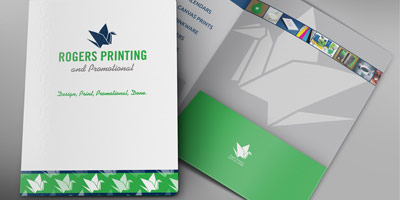Handling your company’s commercial print jobs should not be a stressful process! Even if you’re working with a last-minute deadline and very short production hours, there are small steps you can take to ease the burden of a time crunch. Here are our top ten ways to save time and money in the midst of a mad rush.
- Send a Print-Ready File
Our favorite document to print is a PDF with outlined fonts, high quality imagery, and correct trim/bleed areas. The amount of time we spend fixing poorly formatted documents, or holding for a job that isn’t up to print standards, is shocking. If in doubt, simply ask for print specifications before sending the final file.

- Use Templates
One of the simplest ways to make sure you’re doing it right is to find a template first. Just ask Google for a trifold brochure template, or a 4.25″x11″ door hanger template. By using a template to guide your design, you won’t be guessing at die cuts or complicated folds. - Proof First
Don’t just toss a file our way and expect us to catch mistakes. We are all human! Check wording, layout, and dates multiple times. In fact, send your piece to a colleague to proof as well. There should be no corrections when you see our courtesy proof. - Proof Approval
Once we have a work order for your job, we’ll email a courtesy proof for your approval. Keep an eye on email and approve ASAP. If you don’t want to see a proof, or if it’s a job we’ve printed many times, let us know no proof necessary and we’ll move into production right away.

- Use Common Sizes
Take advantage of common sheet sizes to limit paper waste and save money. Also, let us decide the original size to print. Sometimes we receive a 5.5×8.5 and we’re instructed to print 2 up on an 8.5×11 sheet, but we can actually print 4 up on an 11×17 sheet which saves a big chunk of change. All of the above are “common” sizes, and a good rule of thumb is increments of 8.5×11 (or what can fit into that). A 4.25″x5.5″ postcard will be cheaper than a 4″x5″ simply because it fits better on a standard sheet, so will require less cuts and less waste to get to its final size. Again, if in doubt, ask us. - Use Common Papers
We stock specific brands and weights, and have a wonderful relationship with our paper supplier which gives us access to many stocks within less than a business day. These stocks perform well with our presses and finishing equipment, ensuring a smooth production process. Unfortunately, some specialty stocks can take a few days to produce and come with minimum order amounts (especially “mill” items, which are literally created at the paper mill on order). These could potentially cause problems for our machines, especially if slippery, textured, or too thick. The same warning holds for custom stocks that customers bring for us to print on. If it’s a printer-friendly paper, we can likely get that same stock for a better price with a bigger sheet. - Stick to a Standard
Use templates, colors, designs, and papers you’ve used before. This maintains your brand image and also reassures customers already familiar with your style. Bonus: We save every single job to our customer files, so if we are consistently printing 5×7 postcards for the same customer, we’ll use the same print template. That means your new postcard takes just seconds to set up.

- Print In-One-House
Choose a full-service printer for your job. A bulk mailing is much more efficiently sent if your printer can handle the printing, presorting, addressing, packaging, AND distribution. Imagine printing with one company, having the job shipped to another for packaging, then potentially yet another for distribution. Not only would you be wasting time and money with pointless shipping, you’d risk a number of potential mistakes with so many involved in the process. - Print Digitally in a Crunch
Although the offset press is cheaper for large runs, digital prints are much faster. If you can’t wait for the press (3-5 business days), consider printing part of the job on a digital copier. You can likely get what you need within a business day, which will tide you over until the remainder of the job comes off the press. - Plan Ahead For Specialty Finishing Options
Every additional step beyond “print” can add hours or days to production time. Sometimes, we only need to print and cut a job to completion. Most times, printing is just the beginning. Scores, folds, perforations, staples, and other random bindery options add a minimal chunk of time. Die cutting, embossing, foiling, and UV/aqueous coating could add a few business days.

Be aware of all of the above to save time and money for your next project. Remember you can always contact us before a big deadline to help with any questions you have! We have a full-service design AND production team ready to make your company look its absolute best.


Thanks for this info. My dad is planning to give out flyers to promote his restaurant. He’s now looking up some printing services to help him.
I’m planning on having a large New Years party and I still need to make the invitations. Now I’ll have to see about using a good template and proofreading the work first, which you did mention. You are right that we as humans do make mistakes so it’s essential to make sure all of the writing is correct. If anything, I’ll just see about getting someone to do the work for me.
Thanks for the comment, Caden! Most of these tips we learned the hard way 🙂